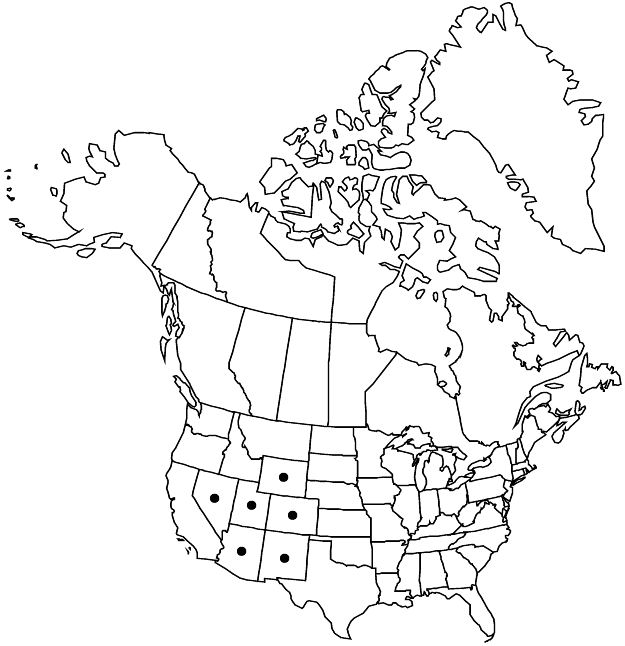Holodiscus discolor var. dumosus
Man. Bot. Rocky Mt., 79. 1885.
Stems 0.3–2 m. Leaves: long shoots (not predominant): petiole indistinct with decurrent blades; blade rhombic to slightly ovate, maximal width usually at mid blade, sometimes in proximal 1/4 of blade, 1–4(–6) × 0.5–2(–3) cm, base cuneate to decurrent, sometimes truncate and rounded, apex acute; short shoots (predominant): petiole obscured by decurrent blade; blade rhombic to ovate, maximal width approximately mid blade, 1–2(–3) × 0.5–1(–2) cm, base acute, decurrent, margins rarely with secondary teeth, apex acute. Inflorescences 3–12 × 3–8 cm, irregularly branched, loose. 2n = 36.
Phenology: Flowering Jun-–Aug.
Habitat: Dry habitats, mixed shrublands, ponderosa pine woodlands, rock outcrops, edges of talus slopes
Elevation: 1400–2800 m
Distribution

Ariz., Colo., Nev., N.Mex., Utah, Wyo., Mexico (Chihuahua, Durango, San Luis Potosí).
Discussion
Variety dumosus may be distinguished from var. discolor by the following features: leaf blade decurrent on the petiole on long- and short-shoot leaves, short-shoot leaves rhombic to slightly ovate with a narrower length to width ratio (2.1–3.1:1), and maximal width of blade near mid blade or slightly below. The inflorescences are generally shorter and narrower than in var. discolor. The shrub is generally shorter (1–2 m) than in var. discolor (1–6 m) with a more open habit. Variety dumosus occupies more arid, rocky, fast-draining sites such as scree slopes and rock outcrops. Its primary distribution is in the central Rocky Mountains, centered on Colorado and Wyoming, with western extensions into central and southern Utah and central Nevada, and southern extensions to northern Arizona, New Mexico, and Chihuahua, Durango, and San Luis Potosí in Mexico. The western extensions and Wyoming populations show indications of possible hybridization with Holodiscus microphyllus. The southern populations show some hybridization with populations of var. discolor that occupy higher elevations, in cooler, moister habitats. The long-shoot leaves of some plants of var. dumosus can be very similar to those of var. discolor, particularly when growing in moister sites.
Selected References
None.